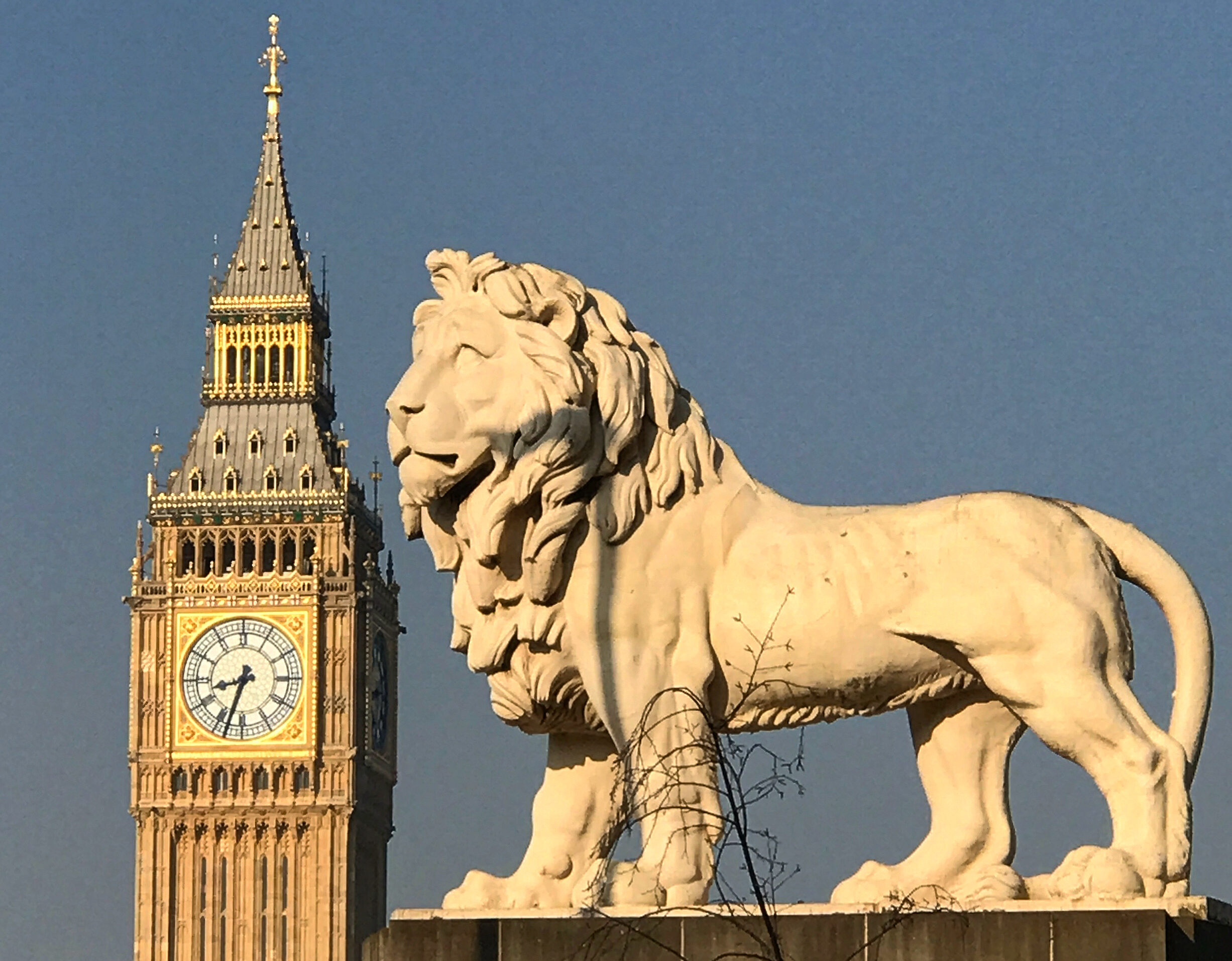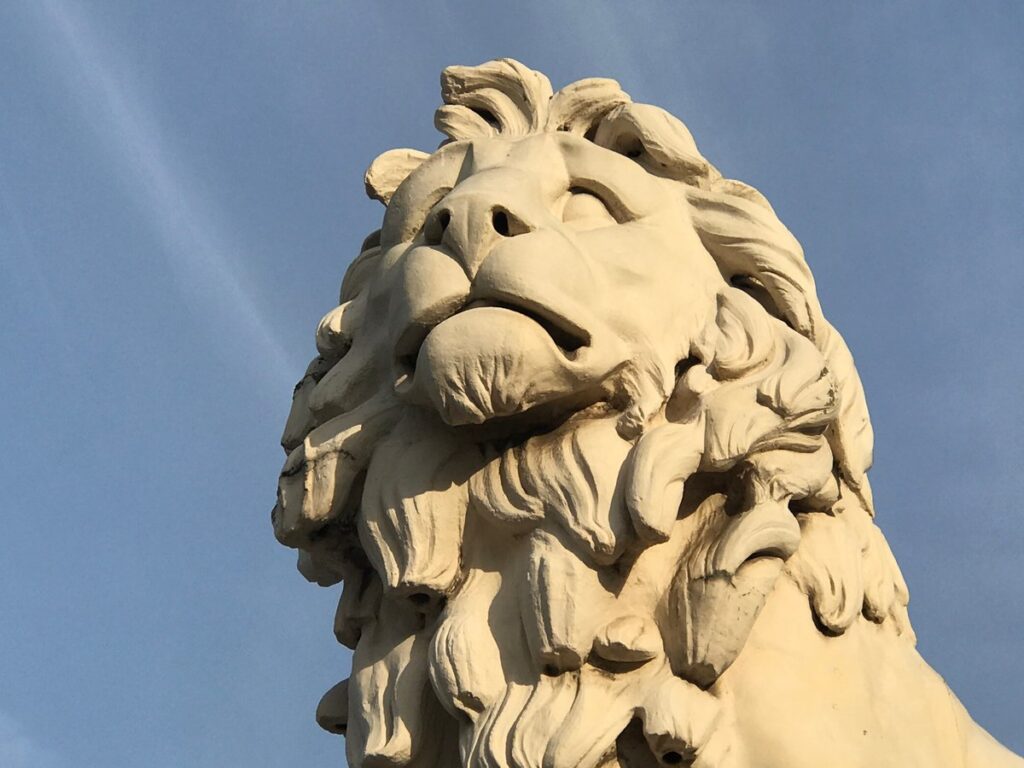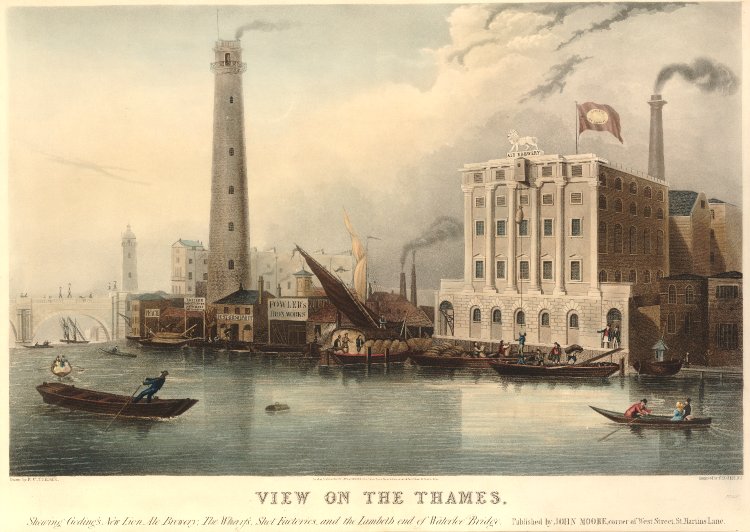
For the past several months I’ve been taking groups of cruise passengers on a Winston Churchill tour – five days encompassing Chartwell, Bletchley, Blenheim, the Cabinet War Rooms and various spots in London.
They stay at the Marriott County Hall (the former home of the London County and Greater London Councils) and, each morning, climb onto a coach just on the south side of Westminster Bridge, dropping off at the same spot each evening.
The stop is slap bang next to the magnificent fellow seen above, the South Bank Lion, since 1981 a grade II* listed monument, but with a history stretching back nearly 200 years.
The lion was made in 1837 – the year of Queen Victoria’s accession if you’re looking for historical markers – and is made from something called Coade Stone. This was an artificial stone (in fact, a type of ceramic stoneware, fired in a kiln), so our lion was cast in a mould, rather than carved like a sculpture. One of the benefits of Coade stone is its resistance to weathering which, given the acidic pollution in London’s atmosphere, means that the lion looks considerably better for his age than perhaps a ‘real’ stone sculpture would have done.
He’s known as the South Bank Lion because this is where he has always been – first on the roof of the Lion Brewery (located on the site of the present day Royal Festival Hall) where he dominated the view of the river from the opposite bank. This area was cleared in 1949 and the brewery (which had closed and then become a warehouse) was demolished. The lion might have gone the way of the building except that thousands of Londoners petitioned the LCC for him to be saved. Even King George VI intervened, so the beast was reprieved and erected at Waterloo entrance to the 1951 Festival of Britain. (The lion was painted bright British Rail red.)
He outlasted the Festival as he outlasted the brewery, being moved in 1966 to his present spot when Waterloo station was extended. Two other Coade stone lions were made for the brewery at the same time as ours; one is lost to history, but the other was expensively gilded in 1991 and now overlooks the Rowland Hill gate at Twickenham rugby stadium.



